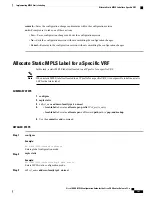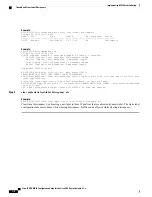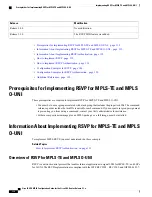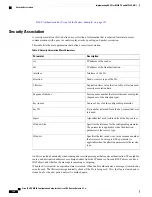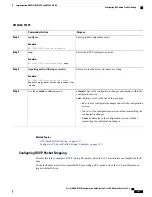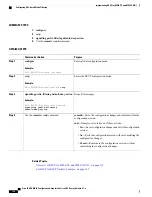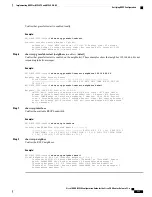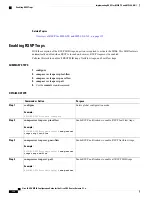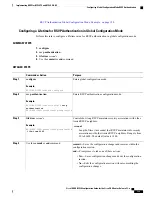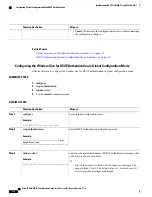
This table shows how to locate the source and destination address keys for an SA that is based on the message
type.
Table 4: Source and Destination Address Locations for Different Message Types
Destination Address Location
Source Address Location
Message Type
SESSION object
HOP object
Path
SESSION object
HOP object
PathTear
IP header
HOP object
PathError
IP header
HOP object
Resv
IP header
HOP object
ResvTear
IP header
HOP object
ResvError
CONFIRM object
IP header
ResvConfirm
IP header
IP header
Ack
IP header
IP header
Srefresh
IP header
IP header
Hello
—
—
Bundle
Related Topics
Specifying the Keychain for RSVP Neighbor Authentication, on page 142
RSVP Neighbor Authentication: Example, on page 151
Configuring a Lifetime for RSVP Neighbor Authentication, on page 143
RSVP Authentication Global Configuration Mode: Example, on page 150
Key-source Key-chain
The key-source key-chain is used to specify which keys to use.
You configure a list of keys with specific IDs and have different lifetimes so that keys are changed at
predetermined intervals automatically, without any disruption of service. Rollover enhances network security
by minimizing the problems that could result if an untrusted source obtained, deduced, or guessed the current
key.
RSVP handles rollover by using the following key ID types:
•
On TX, use the youngest eligible key ID.
•
On RX, use the key ID that is received in an integrity object.
Cisco IOS XR MPLS Configuration Guide for the Cisco CRS Router, Release 5.1.x
121
Implementing RSVP for MPLS-TE and MPLS O-UNI
Key-source Key-chain

